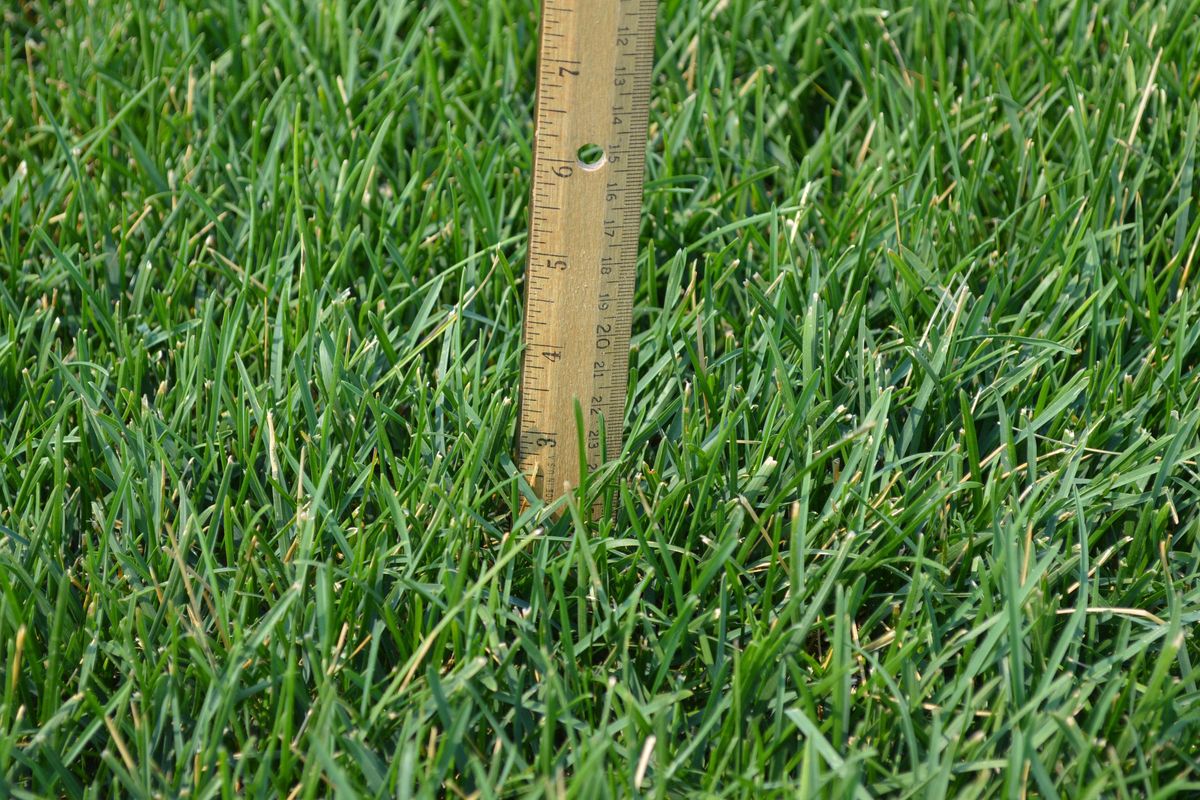Gardening: How is your lawn faring during hot weather? These tips can help restore it to health

September is a great time to restore a lawn. The temperatures have cooled but the soil is still warm and rain should be coming soon. Here are some things to consider.
First, if you are dealing with a thin lawn, why is it thin? Have trees and shrubs grown tall and now shade it too much? Has the soil become compacted by too many feet or the lack of aeration so that air and water can’t get deep into the soil? Have you fertilized and watered properly? Have weeds taken over?
As we get past this hot summer weather, the first thing to do is check that your sprinkler system is operating effectively. Check for broken or plugged heads. Sod can grow over the sprinkler heads and disrupt their spray pattern. Check that rotary sprinklers are turning correctly. I had to replace two heads this summer because they wouldn’t turn and lost some plants.
Are you watering enough to keep the grass in good shape? New research that I was just made aware of indicates that in really hot weather, it is important to water lawns frequently but lightly to keep the roots within 2 inches of the soil moist. These waterings should be in addition to weekly deep waterings to keep deeper roots healthy. If you are using movable sprinklers on a hose, check that you are running them long enough and in a pattern that covers all of the lawn.
Next, if you haven’t aerated your lawn in a while now is the time to do it. Hire or rent an aerator and run over the lawn twice with the second pass at 90 degrees to the first.
Trim back shrubs and trees to open the area to light again. It is the end of the summer so light pruning won’t hurt the plants. If heavy thinning or tree work is needed wait until late fall or early spring when the plants are dormant.
Weeds are a sign that the grass is struggling, so use a broadleaf herbicide to knock them back at least three weeks before you plan to reseed. The herbicide residual will have dissipated by the time you seed.
With this work done, it’s time to choose the best seed for your restoration project. If you have lots of sun, Kentucky bluegrass works well. If you have light to moderate shade for more than half the day, consider a fescue mix, which is much more shade-tolerant than bluegrass. Be willing to pay for quality seed. Rough up the soil surface but don’t rake out the existing grass. Spread the seed and a lawn starter fertilizer in two directions 90 degrees to each other. Rake the seed into the soil surface and then roll with a lawn roller. Spread pelleted mulch over the surface and water well. Water lightly two to three times a day until the grass emerges and then once every day for two to three weeks to get it properly established.
Pat Munts has gardened in the Spokane Valley for over 35 years. She is co-author of Northwest Gardener’s Handbook with Susan Mulvihill. She can be reached at pat@inlandnwgardening.com.